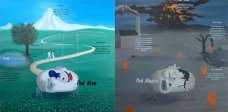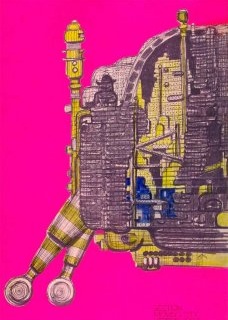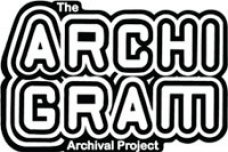
newspaper
news
The project makes the work of the seminal architectural group Archigram available free online for public viewing and academic study.
Almost 10,000 images from one of architecture’s most revolutionary groups, Archigram, go online in a free website in April 2010. This initiative, from the University of Westminster’s Department of Architecture, creates probably the richest digital resource for modern architecture in the world.
Now the astonishing range, sheer volume and continuing challenge of Archigram's work can be seen as never before through the openly available information technology they
helped to predict. Archigram were the most provocative and visionary of all the 1960s architecture groups. No architects before had looked so creatively at post‐war consumer culture and the new possibilities that digital technology would offer. Much of Archigram's work
became iconic ‐‐ such as Ron Herron's image of Walking City arriving in Manhattan.
Their importance to architecture was recognised when Archigram were awarded the RIBA’s Royal Gold Medal ‐‐ that institution’s highest honour ‐‐ in 2002. But till now, it has been almost impossible to get a comprehensive view of Archigram’s work. Viewers of the Archigram Archival Project (http://archigram.westminster.ac.uk)can for the first time examine the full range of drawings, photographs and other material from over 200 projects created mainly in the 1960s and 70s by this group of six of architecture’s most influential figures: Warren Chalk, Dennis Crompton, Peter Cook,David Greene, Ron Herron and Michael Webb.
The site reveals the extent of Archigram's ongoing challenges. World‐famous projects including Walking City, Plug‐in City and Instant City, can be readily explored in detail, and seen against other visions of, and prototypes for, tomorrow’s lifestyles. A substantial body of built designs ‐‐ including a swimming pool for Rod Stewart – as well as other larger proposals – like an unrealised multi‐million Monte Carlo casino – can be seen against elusive and beautiful, 'invisible' projects which refused to accept the
conventions of traditional practice.
Among the little‐seen highlights of the new website are: full copies of the nine‐and‐ahalf magazines which literally made the group’s name; Temple Island, – Michael Webb’s
mind‐blowing explorations of the nature of perspective in architectural representation; and Soria Moria, a collaboration with Cedric Price. Archigram's involvement was central to the Archigram Archival Project, which builds
upon the extensive work done by Archigram member Dennis Crompton on their collection, and links it to the archives held by Ron Herron's son, Simon, ‐‐ as well as to
private collections of other Archigram members and their heirs.
The project was run by a team from EXP, the research centre for Experimental Practice in the Department of Architecture, University of Westminster. The project team was led by Dr Kester Rattenbury and Professor Murray Fraser, with Clare Hamman acting as project manager. The website was devised by Filip Visnjic along with Pierpaolo di Panfilo and Professor Stephen Winter from the University of Westminster’s Centre for Parallel Computing, in the School of Electronics and Computer Science.
The work was funded by a £304,000 grant from the Arts and Humanities Research Council.

Temple Island 'Section Through Cone of Vision Circular Image'
Michael Webb

Living Pod 'Pod Vivo / Pod Muerto'
David Greene

Walking City 'Section (Partial)'
Ron Herron/Archigram


